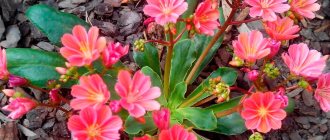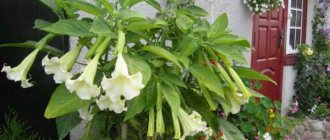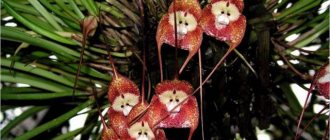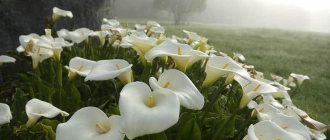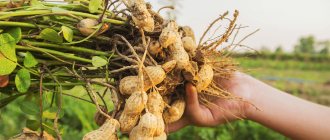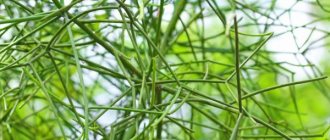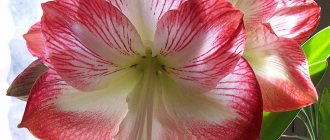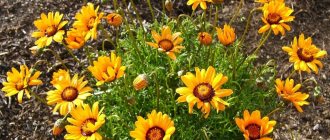Vriesea splenrieta is a stemless houseplant native to sunny South America. The plant belongs to the Bromeliad family.
They gained popularity for the most part due to their spectacular appearance: unique feather-shaped inflorescences with exotic-looking bracts.
The Vriesia splenrieta bush is an unusually shaped shrub with long and wide leaves, which are colored with uneven stripes of light green and dark green. At the base, the leaves form a cavity, the volume of which can reach 5-6 liters.
The peduncle is oblong, grows in the shape of a spike and reaches a height of more than 1 meter. The inflorescence with bracts can have a very diverse color: green, orange, scarlet and yellow, milky shades. For its unusual shape of inflorescences, Vriesia splenrieta is popularly called “fiery sword”. The fruits appear in the form of a miniature capsule richly filled with seeds.
Planting/growing
Vriesia splenrieta is an exotic flower, caring for and growing it is not easy, but fascinating. Having understood the rules for caring for this representative of the Bromiliaceae, the gardener will be able to fully enjoy the flowering of such a colorful plant.
To create conditions that are comfortable for growing, you should focus on the flower’s natural habitat. To plant Vriesia splenrieta, it is necessary to select nutritious and loose soil based on peat, pine bark, sand component, rotted leaves, turf soil, sphagnum moss and charcoal. It is imperative to ensure proper drainage and air circulation for the plant’s root system.
Caring for Vriesia Splenriet at home
In nature, Vriesea growing on branches or trunks have “learned” to collect moisture. Drop by drop, it accumulates in the depths of the outlet and is consumed during dry times. When watering a potted crop, water is artificially poured into the recess and then constantly changed, making sure that moisture does not get on the developing peduncle. Thanks to this, during winter, when the risk of rot is especially high, the moisture is removed after a couple of hours.
The warmer the room, the more often the vriesea needs watering. It is convenient to combine it with wiping the leaves with a wet rag or cloth. For irrigation, use soft, settled water at home temperature.
At home, Vriesia Splenriet does not require constant feeding. Systemic fertilizer for epiphytes and orchids can be applied only when the plant forms and grows a peduncle. This will make flowering much brighter and longer, and will also help the flower leave behind healthy, strong daughter rosettes. The mixture in liquid form is poured into the center of the leaf cone.
When the peduncle dies, the rosette itself gradually dies off along with it. If caring for Vriesia Splenriet at home was attentive and complete, the plant leaves young shoots, which are planted and grown in the same way as adult specimens.
A loose soil mixture based on:
- 2 parts of garden soil;
- 1 part crushed pine bark, pre-steamed;
- 1 part turf soil;
- 1 part washed river sand.
As a loosening additive, you can introduce chopped sphagnum into the soil, add small drainage gravel and coke, which will help remove excess moisture and eliminate the development of harmful microflora.
For the first time after planting, it is better to cover the shoots with film or a bag. It will create and maintain constant humidity. The ideal temperature for rooting is 22–25 degrees.
Lighting
In order for the flower to grow, develop, smell fragrant and delight with its appearance, it is worth taking care of a place for Vriesia splenrieta immediately after purchase. The plant is light-loving, therefore, you should choose eastern or western windows of the house.
Optimally comfortable lighting is diffused soft light, a little partial shade, but not bright sun. On the contrary, you should avoid direct exposure to ultraviolet radiation, especially during the midday hours - the sun's rays can cause burns and shorten the flowering period of the plant. If the leaves are denser, they may fade, turn pale, which will subsequently lead to the gradual withering of the flower. The rays of the morning sun have a beneficial effect on the development of foliage and the formation of new buds.
Air and soil humidity
It is best to maintain humidity at 70-75%, while avoiding excessive drying of the top layer of soil or, conversely, watering beyond normal.
Water procedures should be carried out twice a month. Immerse the vriesea splenrieta flower completely in soft water at room temperature and let it saturate and absorb plenty of moisture.
You can irrigate the leaves with previously settled water, and fill the tray with moisture-intensive components - pieces of moss, pebbles.
To maintain the microclimate next to the flower, place a container of water and install a humidifier, and in winter, take care to place the plant away from heating elements.
It is worth watering directly into the outlet, keeping it clean, because getting soil inside harms the plant.
Planting and fertilizing
An epiphytic plant can be grown without soil at all or limited to a small amount of nutrient substrate.
Vriesea splenrieta, home care for which is not only thorough, but also specific. For the soil, you should select fertilizers with a minimum content of nitrogenous substances and a complete absence of calcium in the composition, as this can destroy Vriesia. They usually fertilize once a season, just before flowering begins, by pouring it into the outlet along with watering the flower.
The fact that Vriesea can easily germinate without any substrate greatly distinguishes the plant from the general mass of decorative flowers. The root system is very poorly developed - this makes it possible not to replant the plant according to a specific schedule, but only when it is necessary to propagate the flower. But it is important that the pot has a drainage system of holes.
Unusual properties allowed gardeners to get creative - grow the flower using block planting, which involves attaching it to bark or driftwood like a mini-plate. After all, in fact, soil is needed for anchorage, not for nutrition.
The flower does not tolerate changing the pot or substrate very well. The procedure should be done only when necessary and certainly in the spring and summer, excluding the flowering phase.
Description of the variety
Vriesia is one of the most decorative representatives of the large bromeliad family. Perennial. Refers to epiphytic (growing or permanently attached to other plants) herbaceous plants. Vriesia is native to the tropical forests of South and Central America, including southern Argentina and Brazil. The plant is also widespread in the West Indies.
The correct name of the plant is pronounced Frizeya (Vrisea). But in literary sources and in everyday life the plant is called Vriesia - a transliteration of the scientific name.
Vriesia leaves are leathery, curved, and have smooth edges. They form a rosette, the center of which is a container for collecting rainwater. Many plant species have a variety of colors in the form of stripes and spots, some are covered with scales. There are also plain ones. The length of the leaves reaches from 20 to 80 cm. The width of the leaf is 4 - 8 cm.
The peduncle is long, sometimes reaching up to 1 meter. Spike-shaped multi-flowered inflorescences with bracts of various colors are formed on it. They can be monochromatic - red, yellow or multi-colored - red-orange, yellow-red. The bracts last a long time - several months, the flowers fade very quickly. The fruit is a capsule containing seeds with tuft-shaped appendages.
Because of the spike-shaped, flat inflorescence, vriesia is called the Flaming or Shining Sword.
The roots of the flower are bulky and weak. They have practically lost the function of absorbing nutrients and serve to attach and retain Vriesia on the substrate. Vriesia receives the necessary nutrition and moisture from the leaf funnel.
Under natural conditions, the leaf funnel of Vriesia can accumulate up to 4.5 liters of water.
Under natural conditions, the plant grows in tropical rainforests at an altitude of 2500 m above sea level. With the help of roots, it attaches to the bark of trees (it does not feed on tree sap), snags, and rocks. In southeastern Brazil, the cliffs are covered with a carpet of various species of Vriesia and Tillandsia.
There are almost 250 species of Vriesia in nature. But 150 species are used in home floriculture.
Vriesia is very unpretentious and can successfully adapt to home conditions. But do not forget that Vriesia is a resident of the tropics and before purchasing you should think about whether you can provide the plant with suitable conditions throughout the year.
Reproduction
Reproduction of Vriesia splenrieta is possible in two ways - planting babies and planting seeds.
Caring for seedlings is very difficult and labor-intensive, and efforts are not always crowned with success. Sprouted seeds begin to bloom no earlier than 5 or even 10 years from the moment of planting.
Reproduction by children is a more reliable and reliable way to acquire a healthy and flowering plant at the optimal time. “Offsprings” are formed immediately after flowering - the mother flower dies, the children continue to grow.
They are selected and deposited after preliminary cleaning with a soft brush from the ground and then washing in water. Cut off the flower shoots with a sharp knife, sprinkle them with coal and let them dry, leaving them for 24 hours.
Next, the baby is placed in a pot with a drainage layer and on top of loosely poured soil. Everything is covered with film to create greenhouse germination conditions: temperature not less than +25-27°C, humidity - 70-80%. The vriesea is then placed in diffuse sunlight. Plants planted vegetatively begin to bloom after 3-5 years.
Pests and diseases
Diseases for Vriesia splenrieta, which was cared for properly, are not typical. However, if development conditions are violated, the following may occur:
- reduced air humidity, excessive watering - fading of leaves, delayed development and growth;
- burns from ultraviolet radiation - the appearance of pale and brown spots;
- hard water - the tips of the leaves turn black;
- lack of irrigation - leaves dry out and turn black;
- exposure to cold air - wilting, inflorescences fall off, leaves become thinner;
- excessive watering or improper cutting of children for planting - rotting and death of the flower;
- not enough light baths - faded and faded buds;
- fungal infection is observed with gray spots and is often associated with intensive watering of the plant.
Among the pests that can attack Vriesia splenrieta are: bromeliad, palm, comb and black scale insects, red spider mites, mealy bugs, bristle bugs and root bugs.
| Growing | The light-loving and heat-loving plant requires a relatively constant temperature throughout the year: not lower than +17°C and not higher than +25°C. Bright, sunny lighting or artificial lighting is required. |
| Humidity | Increased or high, about 70-80%. In summer, the soil is kept moist by pouring water directly into the plant outlet every 3 days; in winter, water moderately, allowing the soil to dry slightly between waterings. |
| Feeding and pruning | Before flowering, fertilize with a weak solution of any complex preparation; do not fertilize during the dormant period. It is necessary to trim the plant from fading inflorescences and dried tips of foliage as necessary. |
| Flowering period | Depending on the time of planting, the Vriesia flower at home can bloom in February-April or May-July. |
| Landing, transplant | After acquisition, subsequent transplants are combined with the separation of children. Plant in soil for bromeliad plants or prepared independently from leaf humus, peat, sand, pine bark and moss. |
| Reproduction | By shoots or division of the bush. |
| Pests | Bromeliad scale, mealybug, spider mite. |
| Diseases | Diseases are caused by violations of plant care rules - mold, root rot, fungal infections. |
Vriesia Splenriet
Splenriet is one of the brightest representatives of epiphytic plants.
It grows naturally in the southern tropics of America. Lives on trees, tall stumps, dead wood. The leaf rosette of a flower is a kind of funnel, a source of nutrition for the plant. Vriesia Splenriet
Description of the plant
The flower is gorgeous. Looks bright and elegant:
- The dark green leaves of the plant are in rows, collected in a rosette at the base of the flower. The length of the dense leaf with dark scarlet transverse stripes is 40-42 cm.
- The flowers are bright yellow, as if framed by rich red bracts.
- The peduncle, similar to a bright candle, grows to a meter mark. Not only the inflorescences are beautiful, but also the leaves.
It is not for nothing that Vriesia Splenriet is a flower that has gained popularity among gardeners. It has become one of my favorite house plants. When it blooms, it is difficult to take your eyes off its splendor. After flowering, the rosette of the mother flower dies. The life cycle of the plant is continued by the children. There is no need to replant a flowering plant purchased in a store.
Note! It is advisable to buy vriesea in warm weather so that the flower does not die from the cold before it gets home
Vriesia splenrieta flowering
The plant blooms in the 4th year of life. The duration of flowering depends on the variety. The “spike” flowers of Vriesia Splenriet delight the eye for no more than 7-10 days. In nature, the plant blooms for up to six months.
At home, the plant blooms at any time, more often in winter, which is why Europeans call flowering New Year's or Christmas.
The flowers themselves are pale, but surrounded by bright bracts they look impressive
Conditions of care
The exotic beauty Splenriet, or Shiny, comes from the tropics. In order for the flower to be comfortable, room conditions must be close to natural: humid indoor air, temperature +26 degrees. The critical minimum value is +16; at lower values the plant will wither.
Low temperatures make it difficult to absorb moisture from the rosette; excess liquid causes rotting of the roots. To maintain air humidity in the vriesia room, they arrange a shower with a spray bottle. At the same time, you must try to prevent water from getting on the inflorescence.
The indoor flower is fed with complex fertilizer for bromeliads during the formation of the peduncle. With proper care of Vriesia Splenriet, keeping the plant in the house is not so difficult.
